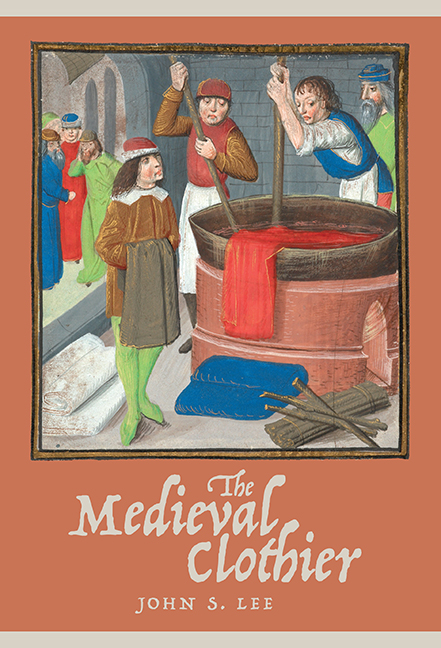Book contents
- Frontmatter
- Dedication
- Contents
- List of Illustrations
- List of Tables
- Acknowledgements
- Abbreviations
- A Note on Money, Weights and Measures, and Places
- Maps
- Introduction
- 1 Making Cloth
- 2 Marketing Cloth
- 3 Identifying Clothiers
- 4 Clothiers and Government
- 5 Clothiers in Society
- 6 Famous Clothiers
- Conclusion
- Appendices
- Gazetteer of Surviving Buildings
- Glossary
- Bibliography
- Index
- Frontmatter
- Dedication
- Contents
- List of Illustrations
- List of Tables
- Acknowledgements
- Abbreviations
- A Note on Money, Weights and Measures, and Places
- Maps
- Introduction
- 1 Making Cloth
- 2 Marketing Cloth
- 3 Identifying Clothiers
- 4 Clothiers and Government
- 5 Clothiers in Society
- 6 Famous Clothiers
- Conclusion
- Appendices
- Gazetteer of Surviving Buildings
- Glossary
- Bibliography
- Index
Summary
LOCATING CLOTH-WORKERS AND CLOTHIERS
Evidence for the extent and distribution of cloth-workers and clothiers in the late Middle Ages can be drawn from a range of sources, including the poll tax returns of 1377–81, the ulnage accounts recording subsidies paid for cloth sold, the rolls of the Court of Common Pleas, and from the travel writings of John Leland, the Tudor antiquarian. These sources each present their own challenges of interpretation.
The ulnage accounts, despite their many limitations, can be used to explore the changing distribution of the cloth industry. In 1356–58, the leading counties for cloth production were, in descending order, Hampshire, Gloucestershire, London and Middlesex, Somerset (including Dorset), Lincolnshire and Kent (see table in Appendix 1). The industries were predominantly urban based, and these county totals mainly reflect production in Winchester, Bristol, London, Wells, Bath, Lincoln and Canterbury, which together with Salisbury and York, were the leading centres of cloth-making at this time. The south-west region, stretching from Southampton and Winchester through Salisbury to Bristol and Gloucester, and comprising the five counties of Hampshire, Wiltshire, Dorset, Somerset and Gloucestershire, accounted for over half the total cloth sold in England. By 1394–98, Somerset had become the leading county for cloth production, followed by Wiltshire, Gloucestershire, Yorkshire and Warwickshire. Although the large towns of Salisbury, Bristol, York and Coventry still comprised one-third of the total cloth sold, many smaller towns and rural communities were now supplying cloth for sale, perhaps accounting for up to half of all output. The southwestern counties still made up over half of the total sales in the country, and the other major textile-producing areas comprised the Suffolk–Essex border, the city of York and the growing industry of the West Riding, the city of Coventry, and Berkshire. By 1468–73, the ulnage totals suggest that Suffolk had become the leading county, with Somerset close behind, followed by Yorkshire, Gloucestershire and Wiltshire. The industry was now becoming increasingly based in small towns and rural communities. While the general trend was for cloth production to increase during the fifteenth century, the 1460s were a period of downturn, so a comparison of the total cloth sales recorded in the ulnage accounts between 1394–98 and 1468–73 shows a fall of 20 per cent.
- Type
- Chapter
- Information
- The Medieval Clothier , pp. 115 - 156Publisher: Boydell & BrewerPrint publication year: 2018



